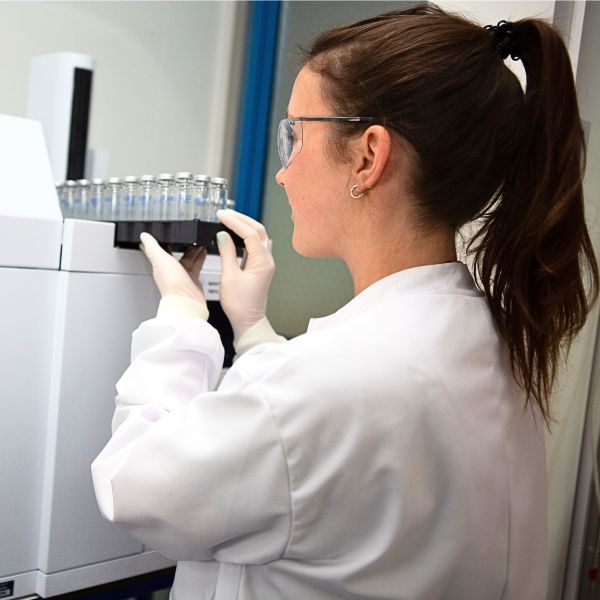RELIABLE SCIENTIFIC ANALYSIS
Alcohol Testing
Cellmark’s family law hair drug and alcohol testing service provides rapid, reliable scientific analysis which is reported clearly and simply.
Call us today on 0800 036 2522 for a free, no-obligation, consultation with one of our advisers

WE WON'T LET YOU DOWN
Why should I choose Cellmark?
Whether you are arranging testing for yourself or acting on behalf of a client - our rapid reliable service, considerable experience and exceptional service sets us apart.
- Instant quotations online or by phone.
- Competitive pricing you'll be surprised how good our pricing is!
- Trusted by private and public sector customers for over 35 years
We are also one of the largest suppliers of forensic analysis to the police and are the UK’s leading DNA paternity tester. We deliver market leading scientific testing to the general public, the legal community and the courts.
THE COMPLETE PACKAGE
What are my alcohol testing options?
As a minimum we recommend our standard alcohol testing package. This involves testing a hair sample for the alcohol markers EtG and EtPa as well as a blood alcohol test. The blood alcohol test can either be PEth or CDT together with LFT. These are additional markers of alcohol consumption.
In our enhanced package we provide hair testing as well as a full range of blood markers (PEth, CDT and LFT) which gives more information to assess evidence of excessive alcohol consumption.
We also provide a comprehensive testing package which, in addition to the hair and blood alcohol tests in the enhanced package also includes the detection of EtG and ethyl sulphate (EtS) in urine. This provides greater sensitivity and accuracy for the determination of recent (in the previous 48 hours) alcohol consumption.
Click an option to get an instant price for your testing:

SIMPLE YET COMPREHENSIVE
How do I arrange sampling and testing?
We would always advise that a clinical assessment by a medical professional is also undertaken in addition to any laboratory testing.
- You can register your alcohol testing case and select the alcohol tests you require using our online registration service or by calling Cellmark's dedicated Customer Services team on 0800 036 2522.
- We will arrange a sampling appointment for you or your client(s) with one of our professional mobile samplers at a location and time that is convenient.
- The hair sample(s) and paperwork will then be sent to Cellmark (any blood or urine samples for supplementary alcohol marker analysis will be sent directly to our partner laboratory).
- We aim to despatch the test report to you by email or first-class post within 5 working days of receipt of your sample at our laboratory.
An explanation of the alcohol markers is provided below.

YOUR QUESTIONS ANSWERED
Further Alcohol Testing Information
The Society of Hair Testing states that the direct determination of ethanol itself in hair is not possible due to its volatility and its potential absorption from external sources. Instead, the minor ethanol metabolites, ethyl glucuronide (EtG) and/or fatty acid ethyl esters (FAEEs) can be measured in hair as direct markers of alcohol consumption.
The concentration of EtG and FAEEs in hair can be influenced by cosmetic treatments including bleaching, perming and thermal straightening products. It is recommended that any cosmetic hair treatment undertaken should be considered during the analysis. Whilst EtG seems not to be affected by a wide range of hair care products their use can lead to a false positive for FAEEs. One reason why our standard recommended test covers both hair and blood sample testing.
Phosphatidylethanol (PEth) is a specific and reliable alcohol biomarker for the detection of recent alcohol consumption in family law cases.
PEth requires ethanol for its production and is formed on the surface of red blood cells when the alcohol reacts with phosphatidylcholine (a substance found in the cell membrane). PEth accumulates as more alcohol is consumed and this makes it possible to provide an indication of whether or not alcohol use has been occasional, moderate or excessive in the previous 4 weeks.
Test results are measured in ug/l. Over 210 ug/l is generally recognised as indicating excessive alcohol consumption in the past month, with 35-210 ug/l representing moderate alcohol consumption.
PEth testing, in combination with hair testing, can provide a good understanding of someone’s alcohol consumption.
Transferrin is a protein present in blood that transports iron around the body and it can also be used to indicate chronic alcohol consumption. In normal subjects transferrin in the blood has between 3-5 carbohydrate sidechains attached to it. When excess alcohol is consumed the attachment of carbohydrate sidechains is reduced to between 0-2. This has become known as carbohydrate deficient transferrin (CDT).
Transferrin remains in the blood circulation for 7 to 14 days and the CDT test can therefore give an indication of excessive alcohol consumption over the previous couple of weeks before the blood sample was taken. A reading of greater than 1.6% in the test indicates possible excessive alcohol consumption during the weeks preceding the test.
Alcohol misuse is the most common reason for elevated CDT levels however elevated levels may also be caused by cirrhosis and other related liver conditions. People with these conditions would also show corresponding anomalies in the liver function (LF) test results. Performing both tests together is therefore important. In addition to our testing we would also always recommend that you seek a clinical assessment by a medical professional.
Liver Function (LF) testing looks at a range of markers within the blood to check how the liver is performing; these are gamma-GT (GGT), alanine aminotransferase (ALT) and aspartate aminotransferase (AST). Excessive consumption of alcohol will affect liver function and produce raised levels of these markers.
Alanine transaminase (ALT) is an enzyme that helps to process proteins. Large amounts of ALT occur in liver cells and if the liver is injured or inflamed the blood level of ALT usually rises.
Aspartate aminotransferase (AST) is another enzyme usually found inside liver cells. High levels of this enzyme in the blood usually mean the liver is injured in some way. However as AST can also be released if heart or skeletal muscle is damaged ALT is usually considered to be more specifically related to liver problems.
Gamma-glutamyl transferase (GGT or 'gamma GT'). A high level of this enzyme is particularly associated with heavy alcohol drinking however there can be other explanations including liver disease and as such it should not be considered in isolation.
In our enhanced package we offer an additional service covering the detection of ethyl glucuronide (EtG) and ethyl sulphate (EtS) in urine. EtG and EtS are direct biomarkers of recent (binge) drinking. They are more stable than ethanol and are consequently more detectable.
Urinary alcohol is normally detectable for a few hours after consumption whereas EtG is detectable in urine up to 3-5 days depending on the amount of alcohol consumed.
Ethyl glucuronide (EtG) was described as early as the 1950's, however, clinical use of the test as an alcohol marker began in 2001 when Dr. Friedrich Wurst, in Switzerland, and Dr. Gregory Skipper, in the USA reported a study of alcoholics in a psychiatric facility in Germany. Their findings demonstrated that EtG was a more sensitive and reliable indicator of both drinking and abstinence than was urine alcohol.
Although some studies have identified false positives which have been allegedly produced by substances other than alcohol, Cellmark's partner laboratory undertakes a process of testing Creatinine levels in order to "normalise" the test. When urine is more concentrated all the values are skewed upward and when urine is more dilute the values are skewed downward - normalising takes account of this.
Useful Links
From ensuring that you have the right information before commencing the testing process to understanding what the final test report means - we aim to provide assistance every step of the way.
Court guidance
Society of Hair Testing
Alcohol and the law
You can also pay for advice from a local legal advisor or solicitor – a number of firms have responded to the legal aid changes by offering fixed price services.




